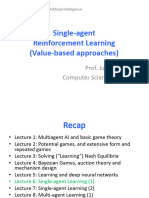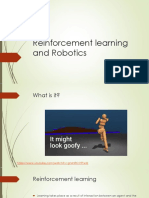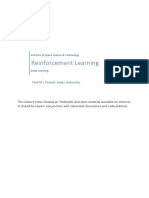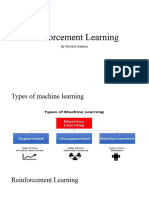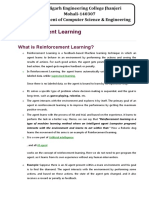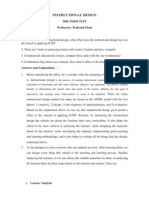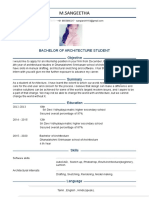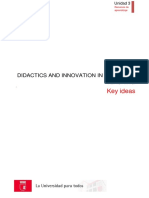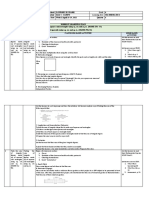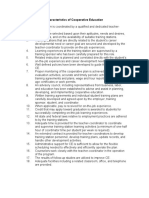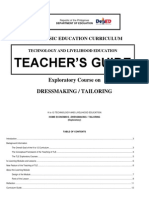0% found this document useful (0 votes)
10 views62 pagesRL - 01 Introduction To Reinforcement Learning
This document provides an introduction to reinforcement learning (RL), outlining its core concepts, components, and challenges. It emphasizes the importance of learning through interaction with the environment, the role of rewards, and the distinction between various learning paradigms. The lecture also discusses the structure of RL systems, including agents, policies, value functions, and models, while highlighting the differences between model-free and model-based approaches.
Uploaded by
g46rjf5cpsCopyright
© © All Rights Reserved
We take content rights seriously. If you suspect this is your content, claim it here.
Available Formats
Download as PDF, TXT or read online on Scribd
0% found this document useful (0 votes)
10 views62 pagesRL - 01 Introduction To Reinforcement Learning
This document provides an introduction to reinforcement learning (RL), outlining its core concepts, components, and challenges. It emphasizes the importance of learning through interaction with the environment, the role of rewards, and the distinction between various learning paradigms. The lecture also discusses the structure of RL systems, including agents, policies, value functions, and models, while highlighting the differences between model-free and model-based approaches.
Uploaded by
g46rjf5cpsCopyright
© © All Rights Reserved
We take content rights seriously. If you suspect this is your content, claim it here.
Available Formats
Download as PDF, TXT or read online on Scribd
/ 62





